श्रीकांची कामकोटिपीठाधीश जगद्गुरु
श्रीशङ्करभगवत्पादानां गङ्गादितीर्थविजययात्रा।
Extract from the Pandita Patra Dated 8th October 1935.
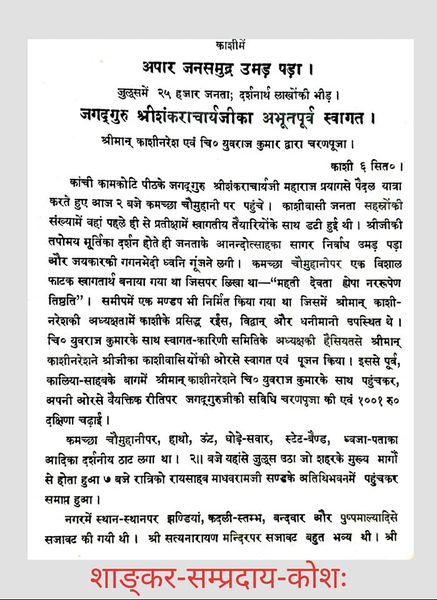
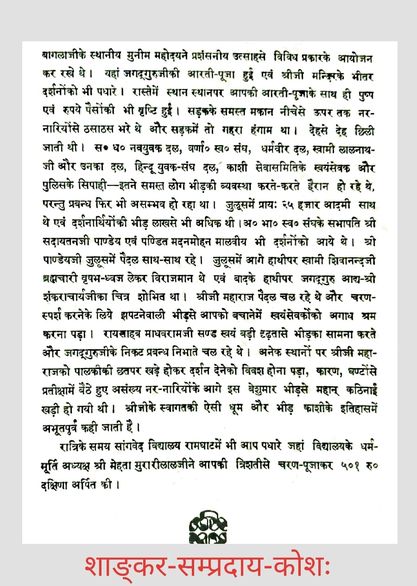
श्रीकांची कामकोटिपीठाधीश जगद्गुरु
श्रीशङ्करभगवत्पादानां गङ्गादितीर्थविजययात्रा।
Extract from the Pandita Patra Dated 8th October 1935.


(5)
श्रीकांची कामकोटिपीठाधीश जगद्गुरु
श्री१००८ शङ्करभगवत्पादानां गङ्गादितीर्थविजययात्रा।
” The 6th of October 1934 –
is a Red Letter Day in the annals of Benares – the ancient and sacred city of the Hindus; when on arrival from Prayag after walking all the distance on foot, His Holiness was accorded a fitting reception by the Hindu Citizens of Benares headed by His Highness the Maharaja Saheb of Benares as Chairman of the Reception Committee.
It is in the same Sacred City several centuries ago, that Sri Adi Sankara Bhagavatpadacharya gave enlightenment to the world through His Bhashya in the presence of Lord Viswanath and also obtained five famous Lingas from Kailash.
The brief stay of His Holiness in Benares for a period of about five months and the celebration of Sarada Navaratra during the winter of 1934 which synchronised with a number of Yagnas and Homas (Havans) will be a memorable event to be cherished by the devout public of this ancient and sacred city.
The crowning success is due to the co-operation of the Hindu Citizens combined with reverential care and interest that was shown by His Highness the Maharaja Saheb of Benares and Pandits of all grades and shades.
The reception committee feels it its duty to publish this booklet so that the future generations may know how the hearts of their fore-fathers lept with joy on the momentous arrival of their Acharya.
Kashi is the nucleus of men of letters. The Holy Representative of Brahma Vidya from the Sacred Kanchi Pitha of Sri Sankara Bhagavadpadacharya coming into contact with, and being heartily received by, the representatives of traditional culture, headed by their Maharaja at the religious Metropolis of Sanatan Dharma, is, needless to say, an epoch in the history of Hindu India, the recording of which has fallen to the lot of our humbleselves, who crave the pardon of the public for any deviation from the sacred duty.
Mahamahopadhyaya
Pandit Ganganath Jha of Tirtharaj, Mahamahopadhyaya
Pandit Annadacharan Sharma,
Heads of Mathas and other religious institutions,
Pratapam Seetarama Sastry Nyayacarya of the Sringeri matha, Kashi and along with a gallery of Pandits submitted a public invitation to His Holiness to grace the Sacred City as early as December 1932.
Mahamahopadhyaya
Pandit Phani Bhushan Tarka Vageesa, Mahamahopadhyaya
Pandit Anantakrishna Shastri and Mahamahopadhyaya
Pandit Manavalli Lakshmana Shastri
along with the public citizens of the City headed by His Highness the Maharaja and Pandit Madan Mohan Malaviya welcomed His Holiness at the out- skirts of the City.
Ex-Mahamahopadhyaya
Pandit Panchanan Tarkaratna and Ex-Mahamahopadhyaya
Pandit Bhau Shastri Vajhe
And other eminent Pandits received His Holiness in the Sangaveda Vidyalaya the Dharmic ideal institution, where all the Pandits had also assembled.
It was the previlege of –
Mahamahopadhyaya Pandit Pramathanath Tarkabhushan to greet His Holiness on arrival at Shivala and at Benares Hindu University.
Mahamahopadhyaya
Pandit Giridhar Sharma from Jaipur, Mahamahopadhyaya
Pandit Durgacharan from Calcutta,
Mahamahopadhyaya
Pandit Mukundalal Bakshi from Mithila and Mahamahopadhyaya
Pandit Harihara Kripaloo from Patna
(all these fountains of Oriental Culture) took part in the public farewell address presented at the Town Hall on the 16th February, 1935.
The function having been arranged by the Joint efforts of all prominent citizens and eminent scholars at Benares.”
A special publication was also brought out by the members of the Gangadi Tirtha Vijaya Yatra – Varanasi Reception Committee recording the special events during this Vijaya Yatra of His Holiness Jagadguru Pujyasri Sankaracharya Swamiji Maharaj of Sri Kanchi Kamakoti Pitha.
– Publishers’ Note By
Sri Madhav Ram Sanda
Sri Jagannatha Shastri Bhradwaj and
Sri Damodhara Das Khanna (1936)

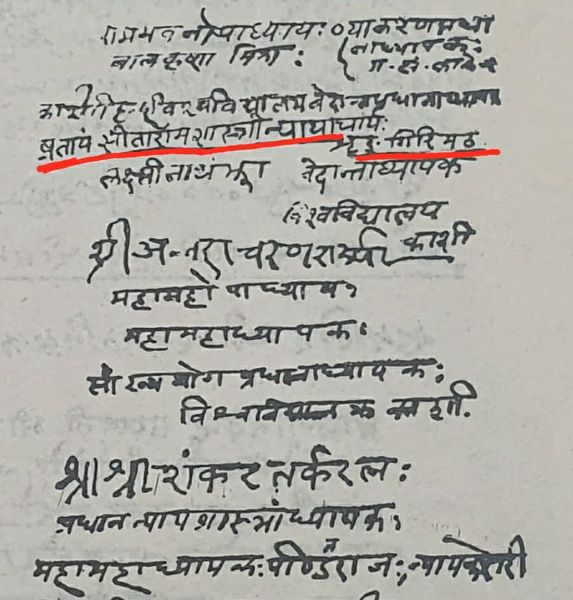
Kasi Vijaya Yatra of His Holiness Jagadguru Pujyasri Sankaracharya Swamiji of Sri Kanchi Kamakoti Peetam, 1934 (4)
श्रीकाश्यां यतिमण्डलाय भिक्षाप्रदानदिने पञ्चगौडयतिमण्डलेन साकं श्रीचरणाः ।
(Kasi Vijaya Yatra of His Holiness Jagadguru Pujyasri Sankaracharya Swamiji of Sri Kanchi Kamakoti Peetam, 1934)
“On the occasion of its annual Convocation, the Banares, Hindu University has after sufficient research by its professors, referred to the Peetha as follows:-
‘ तस्याद्वैतगिरां गुरोर्भगवतः श्रीशङ्करस्योन्नतं
काञ्चीपीठपदं यतीश्वर महन् स्थाने त्वयाधिष्ठितम् ॥”
Sd/_
Pandita Madan Mohan Malavaiyaji
Again on the 19th of March 1935, a monster meeting was held on the grounds of the Benares Town Hall in response to the requisition by about a hundred pandits.
Under the leadership of the Swamiji of the local branch of the Dwaraka Mutt, the traditional Shrimukha of the Peetha along with some verses specially composed for the occasion expressing their considered opinion regarding the status of the Peetha, was read and adopted by the many sanyasins, inclulding the learned austere Karapatriji Dandi Swami, pandits, Mahamahopadhyayas and citizens assembled.
The principal speakers of the day were Ex-Mahamahopadhyaya Pandit Panchanana Tarkaratnaji of Bengal, Giridhar Sharmaji of Jaipur, Pandit Devanayakacharya of the All-India Varnashrama Swarajya Sangha, Pandit Shri-Jeeva Nyayatheertha, M.A. and Sjt. Damodara Dass Khanna of Calcultta.
In the end Mahamahopadhyaya Durgacharan Sankhya Vedantateertha of Calcutta, as a representative of Bengal, invited the Peetha to his province in accordance with the resolutions passed at two successive conferences of pandits at the Bengal Brahmin Sabha and the Shivkumar Bhavan, at Calcutta.
On the next three pages requests by Mandalesvaras, Mahants, scholars and citizens of Varanasi, to His Holiness the Acharya to visit varanasi (1932), can be found”.
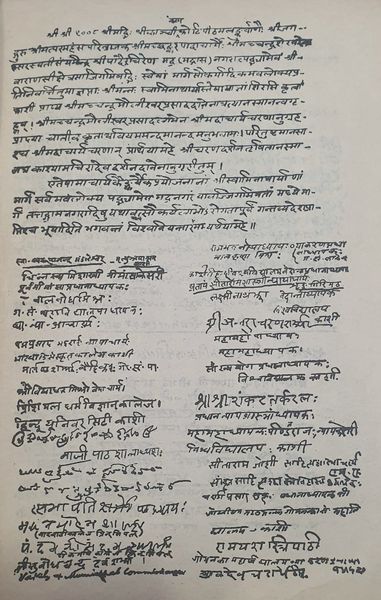
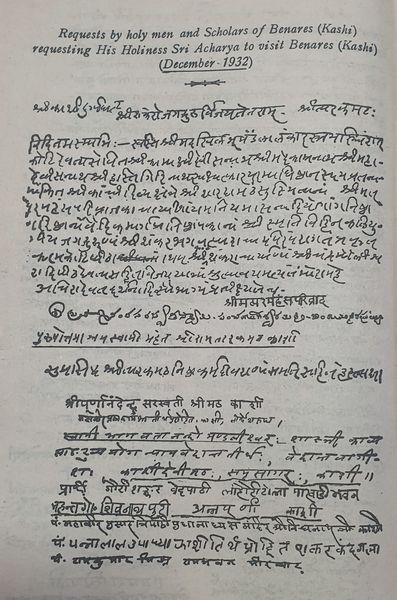
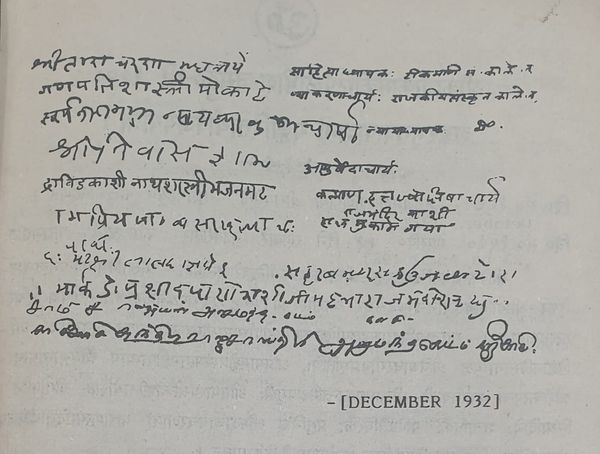
(Kasi Vijaya Yatra of His Holiness Jagadguru Pujyasri Sankaracharya Swamiji of Sri Kanchi Kamakoti Peetam, 1934)
“Similarly the local pandits also who met in the Sanga Veda Vidyalaya in connection with Vinayaka Caturti sessions obtained the old manuscript copy of Anandagiri Shankaravijaya from the Rama Taraka Mutt and a copy of Shivarahasya from the Vidyalaya Adhyaksha’s Library.
The Anandagiri manuscript clearly mentions Kerala as the birth place of Shankaracharya as against Chidambaram mentioned in some editions.
The distribution of the five Sphatika Lingas, the establishment of the Kamakoti Peetha, Śhanmatasthapana, the anointment of Sureshwaracharya on the above Peetha and the final siddhi of the Acharya at Kanchi are also clearly stated in the closing chapters.
As regards the narration of the avatar of Shankara Bhagavatpada in the Shivarahasya, a work unpublished in full till now, all manuscripts, whether in Northern India or in the South, have uniformly the same reading and end with the line.
” स काञ्च्यामथ सिद्धिमाप”
Thus the scholars of Benares felt jubilant over their welcoming a representative of Bhagavan Shri Adi Shankaracharya, to which they gave expression in their first Welcome Address, on the 6th of October 1934, in the following words :-
I have recorded in these pages the facts as I observed them, out of a real desire for the search after the truth. I will be highly obliged if my readers communicate to me their kind criticism or correct any errors or send me additional valuable information.
– K. KUPPUSWAMIAH, Retired Deputy Collector.
Upanishad Ashrama, Nungambakkam, Madras.
Kasi Vijaya Yatra of His Holiness Jagadguru Pujyasri Sankaracharya Swamiji of Sri Kanchi Kamakoti Peetam
” In the last quarter of year 1934, I happened to be at Benares. My stay there synchronised with the historic visit of His Holiness Jagadguru Shri Shankaracharya of Kanchi Kamakoti Peetha, to the holy city.
His Highness the Maharaja of Benares, who was at the head of the Reception Committee formed to welcome His Holiness, Pandit Madan Mohan Malaviya, all the Mahamahopadhyayas, other eminent scholars and indeed the entire public of that spiritual capital of our country, filled with joy, took every possible step to make the visit of the Acharya, hailing from distant Kanchi on foot, spiritually beneficial and advantageous to the Benares publlic.
Prior to the arrival of the Swamiji at Benares, the Maharaja took the opportunity to consult his court pandits and his palace library where a manuscript of the voluminous Shivarahasya was found, the 16th adhyaya of the 9th amsha of which deals with the Avatara of Shri Shankaracharya, as an amsha of Lord Shiva.
This Arsha Grantha referred to in the well known Smriti, ‘Nirnaya Sindhu’ as pramana, mentions the village ‘Shashala’, as the birthplace of Shri Shankaracharya.
Further it describes the origin and distribution of the five Sphatika Lingas and their pooja; and the Adhyaya ends with the Shloka:-
तद्योगभोगवरमुक्तिसुमोक्षयोगलिङ्गार्चनात्प्राप्तजयः स्वकाश्रमे । तान्वै विजित्य तरसाऽक्षतशास्त्रवादैर्मिश्रान् स काञ्च्यामथ सिद्धिमाप II
denoting Kanchi as to the Acharya’s Ashram and place of siddhi. The Maharaja perused also the past records relating to the institutions of Adi-Shankaracharya.
As a result he prepared a document with his seal and signature, as to what he felt, and placed it with his own hands at the feet of the Acharya of the Kanchi Kamakoti Peetha on 1991 Tama Vikrama Samvat Magha Shukla Trayodashi at the annual Convocation of the Sanga Veda Vidyalaya, when all the pandits and leading citizens of Benares had assembled.
A portion of the Abhinandana Patra of the Maharaja is extracted below :-
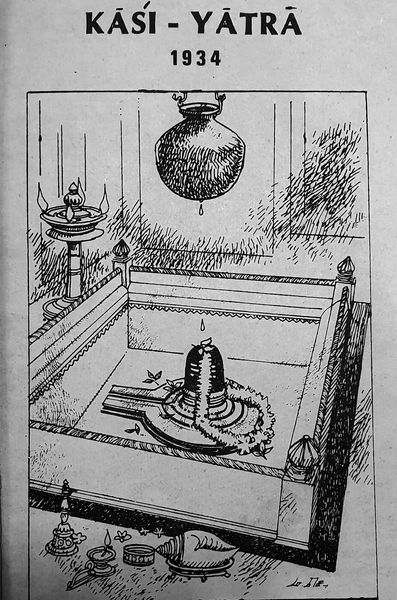
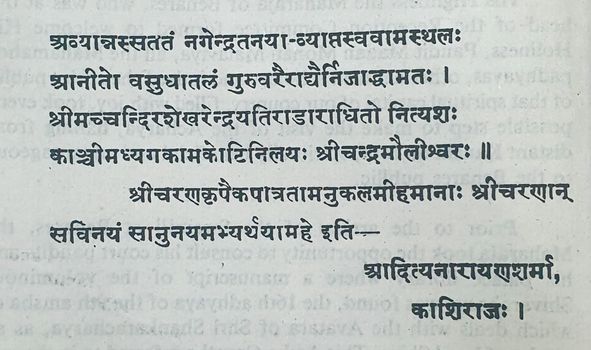
“तस्मात् वेङ्कटगिरिं प्राप्य श्रीवेङ्कटेशमखिलकारणं शुद्धाद्वैतरूपं नत्वा…” (Anandagiri’s Sankaravijaya pr. 66)
” प्रदक्षिणं परिक्रामन् शेषाचलमतंद्रितः ।
गिरेरूर्ध्व समारुह्य स्नात्वा पुष्करिणीजले ॥
वेंकटेशं विलोक्याथ नमस्कृत्वा च भक्तितः ।
स्तुत्वा बहुविधैस्स्तोत्रे श्रीभूकान्तासमन्वितम् ॥ “
(Cidvilasa’s Sankaravijaya Ch. 26 – 3 & 4.)
Sri Sankaracarya climbed up Seshachala and had darshan of Lord Venkatesa. It was here that the Acarya sang the Vishupadadikesanta verses in praise of Hari.
श्रीवेङ्कटेशवृषशैलमुपेत्य योगी यन्त्रं जगत्रयवशीकरणं द्योतं तत् । चक्रे चराचरगुरुर्जगतां विभूत्यै श्रीशङ्करो निगमशेखरपारगोऽयम् II
The Markandeya samhita, records the Acarya’s consecration of the Dhanakarshana yantra in the Tirupati temple.
This tamil pamphlet published by an adherent of the Tunga Sringeri matha, contains a brief note on the Biography of Sri Sankara Bhagavadpada (as found in the 19th century Samkshepa Sankarajaya of Navakalidasa Madhava) and Tanjore Mahratta mural image of the Acarya with His Four Sishyas.
The Great Shankaracharya,
(Life-time From B. C. 42 to B. C. 10.)
ஸ்ரீஜகத்குரு ஆதிசங்கராசாரிய ஸ்வாமி ஜீவித காலம் கல்யப்தம் 3058 முதல் 3090 வரை அதாவது வயது 32. ஜனன பூமி மலையாளத்திலுள்ள காலட்டி அக்ரஹாரம், இம்மஹானது ஏழாவது ஆண்டிலேயே சகலகலாவல்ல ஜகத்பூஜியராய், 16-வது ஆண்டில் கோவிந்தபாதரைச் சற்குருவாய்ற்றேர்ந்து ஸந்நியாஸாச்ரமத்தைப் பெற்று ஸ்ரீசக்கிரம், நவக்ரஹ யந்திரம், சந்திரமௌளீஸ்வர லிங்கம், நரசிங்க சாளிக்கிராமமிவைகளை யளிக்கப் பெற்றார்கள். பின்னர் ஸ்ரீகாசிக்குச் சென்று….
(இவ்வாறே பிறவற்றைக் கண்டு கொள்க)
It is well known that Rshyasringa was a sage of epic celebrity. As such, he ought to have lived long ages before Sankaracarya.
Rshyasringa in Ramayana
There can be no greater authoritative sources than the Ramayana and the Mahabharata regarding the location of the ashrama of the sage, Rshyasringa.
The following verses in Valmiki’s Ramayana will give the clue to the fact that Rshysringa belonged to the period of Dasaratha and that Rshyasringa’s abode was in Angadesa (modern Assam), whence Dasaratha took the sage to Ayodhya.
(a) Ramayana Balakanda – Canto IX:
“एतस्मिन्नेव कालेषु रोमपादः प्रतापवान्” – Verse 7
“ अङ्गेषु प्रथितो राजा भविष्यति महाबलः” – Verse 8
By this time, the mighty Romapada will be the renowned king of Angadesa.
“विभण्डकसुतं राजन्। सर्वोपायैरिहानय।
आनाय्य च महीपाल ऋश्यशृङ्गं सुसत्कृतम् ॥ ” – Verse 12
“प्रयच्छ कन्यां शान्तां वै विधिना सुसमाहितः । । ” – Verse 13
Sage Vasishta says to Dasaratha:-
“O king! Bring Rshyasringa, son of Vibhandaka, here, by all means. After having brought Rshyasringa, give Santa, the virgin, in marriage to him.”
Canto XI.
“पुत्रस्त्वङ्गाधिराजस्य रोमपाद इति श्रुतः तं स राजा दशरथो गमिष्यति महायशाः ।।” – Verse 4
“तं च राजा दशरथो यशस्कामः कृताञ्जलिः।।
ऋश्यशृङ्गं द्विजश्रेष्ठं वरयिष्यति धर्मवित्।।” – Verse 8
“Dasaratha shall go to Romapada, son of the king of Anga, and with folded hands pray for sending the great Brahmin, Rshyasringa”
“वसिष्ठेनाभ्यनुज्ञातो राजा संपूर्णमानसः ।
सान्तःपुरस्सहामात्याः प्रययौ यत्र स द्विजः ।। – Verse 14
अभिचक्राम तं देशं यत्र वै मुनिपुङ्गवः ।
आसाद्य तं द्विजश्रेष्ठं रोमपादसमीपगम्।।” – Verse 15
Having been permitted by Vasishtha, King Dasaratha, with the ladies of the harem, and with his ministers, started for the place where that Brahmin and great sage (Rshyasringa) lived. Having got near that Brahmin, who was near Romapada.
According to the further verses in the epic, Dasaratha requested the King of Angadesa to send sage Rshyasringa to Ayodhya for the Vedic sacrifice that Dasaratha had arranged for.
Rshyasringa in Mahabharata
The story of Rshyasringa is narrated in chapters 87, 88 and 89 of the Teerthayatra section of the Aranyakanda of the Mahabharata.
In verse 22 of chapter 87, Lomasa tells Yudhishthira that Visvamitra’s hermitage shines on the bank of the sacred river, Kausiki.
The next verse states that the abode of the great sage, Kasyapa, known as Punyashrama, is also there, and points to it as also the residence of the tapasvin Rshyasringa.
The relevant verses are:
लोमश:-
“येवा देवी महापुण्या कौशिकी भरतर्षभ ।
विश्वामित्राश्रमो रम्य एष चात्र प्रकाशते ॥
आश्रमश्चैव पुण्याख्यः काश्यपस्य महात्मनः ।
ऋश्यशृङ्गस्सुतो यस्य तपस्वी संयतेन्द्रियः ॥”
Verse 40 of the same chapter states that Romapada is the King of Angadesa. In the tenth verse of chapter 88, Rshyasringa enquires the leader of the damsels (sent by Romapada to entice sage Rshyasringa and bring him to the royal court), as to where the damsel leader’s residence is In the next verse (11), the leader of the damsels informs the sage that her abode is only three yojanas from the other side of the hill, seen near (near Rshyasringa’s hermitage).
The pertinent line runs as follows:
‘ममाश्रमः काश्यपपुत्र रम्यस्त्रियोजन शैलमिमं परेण ।”
The word Yojana’, according to standard lexicons, is a measure of distance equal to 48,000 feet, or roughly 9.09 miles.
Hence, according to the line quoted above, Rshyasringa’s hermitage should have been situated only about 27.21 miles away from the capital of Romapada, the King of Anga, according to the Mahabharata.
Thus, both the Great Epics clearly indicate that Rshyasringa’s ashrama had existed in north-eastern India, somewhere on the border of Angadesa (modern Assam). Kshetras, Asramas or temples with Rshyasringa’s name are also found in Bihar, Chhattisgarh (Shihawa), Himachal pradesh, Karnataka, Tamilnadu and Puducherry (Kottucherry)
(Source: B.Krishnan)
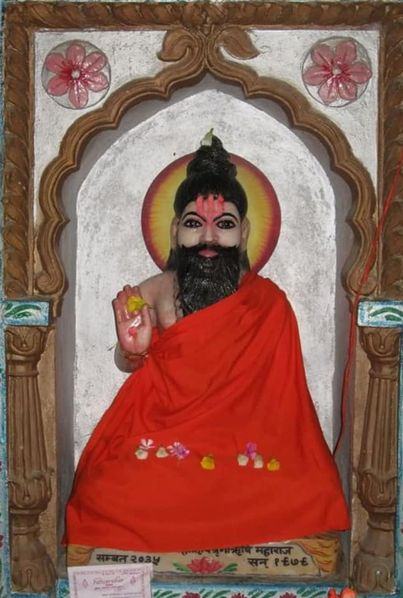
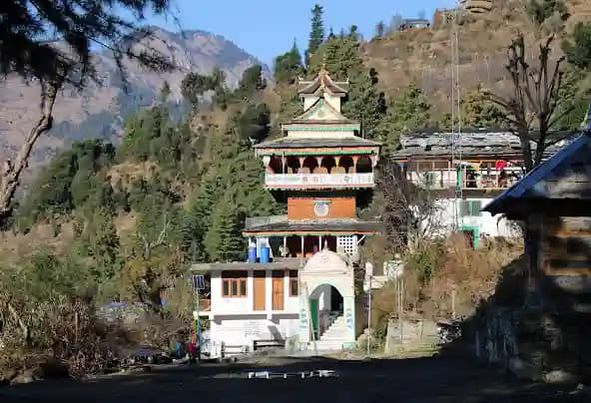
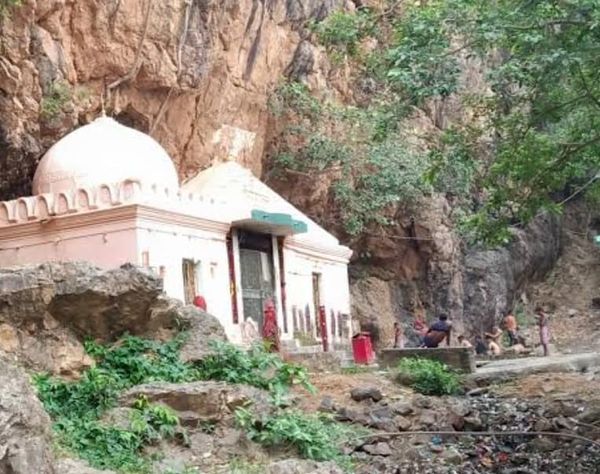
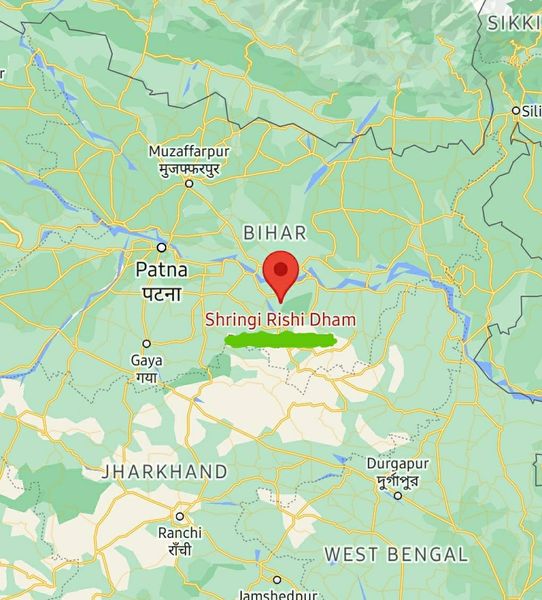
Some of the places visited by His Holiness
Sivaganga Sringeri Swamy in his tours :
Hyderabad Deccan, Nagpur, Jubbalpur, Jhansi, Sagar, Gwalior, Khanapur, Lucknow, Ayodhya, Allahabad, Benarese, Gaya, Burdwan, Cuttack, Jagan nath, Berhampore, Vizayanagaram, Vizagapatam, Raja Mahandri, Bezwada, Guntur, Nellore, Kalahasti, Tirupati, Madras, Kanchi, Trichinopoly, Sreerungam, Madura, Tanjore, Kumbhakonam, Chidambaram, Sheally (Sirkali), Ramaswaram, Pondicherry, Chettinad, Arunachalam, Salem, Cochin, Kaladi, Tiruchur, Malabar, Nilgiris, Bombay, Poona, and many other important places. At Bombay, His Holiness was taken on an elephant in procession, a privilege which has not been extended even to royalty.
At Chidambaram, No Swamy was allowed to enter in procession to the temple during the last 70 or 80 years on account of some disputes between the priests and the Sringeri Swamy. The Sivaganga Swamy visited the temple and had darshan of Sri Nataraja murti and Sri Sivakami Ambal. At Kumbhakonam the Kanchi Swamy had not allowed other Gurus, to exercise any rights or privileges in his jurisdiction, but the Sivaganga Swamy was cordially treated.
At Hyderabad the Swamy commanded great influence and initiated its Prime Minister as his disciple. Gwalior and other states showed him high respect and great patronage.
In fact by his able lectures, religious devotion, liberality, sympathy and genial disposition, the Swamy has been treated by all classes and creeds, as if he was one of their own Gurus and this broad mindedness and conciliation, are rarely met with the heads of the religious Institutions in India.
(Extracted from the book – A Short History of Sivaganga Mutt – APPENDIX II By B.Suryanarain Row, Bangalore, 1914)